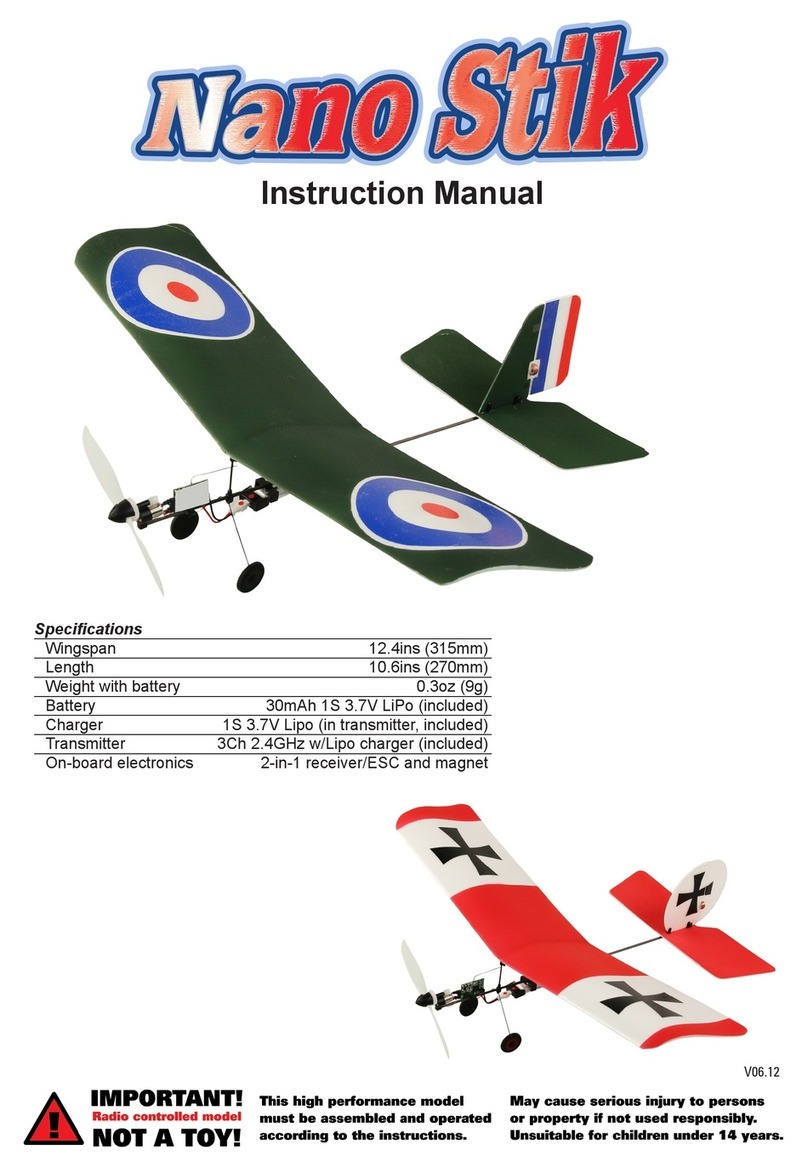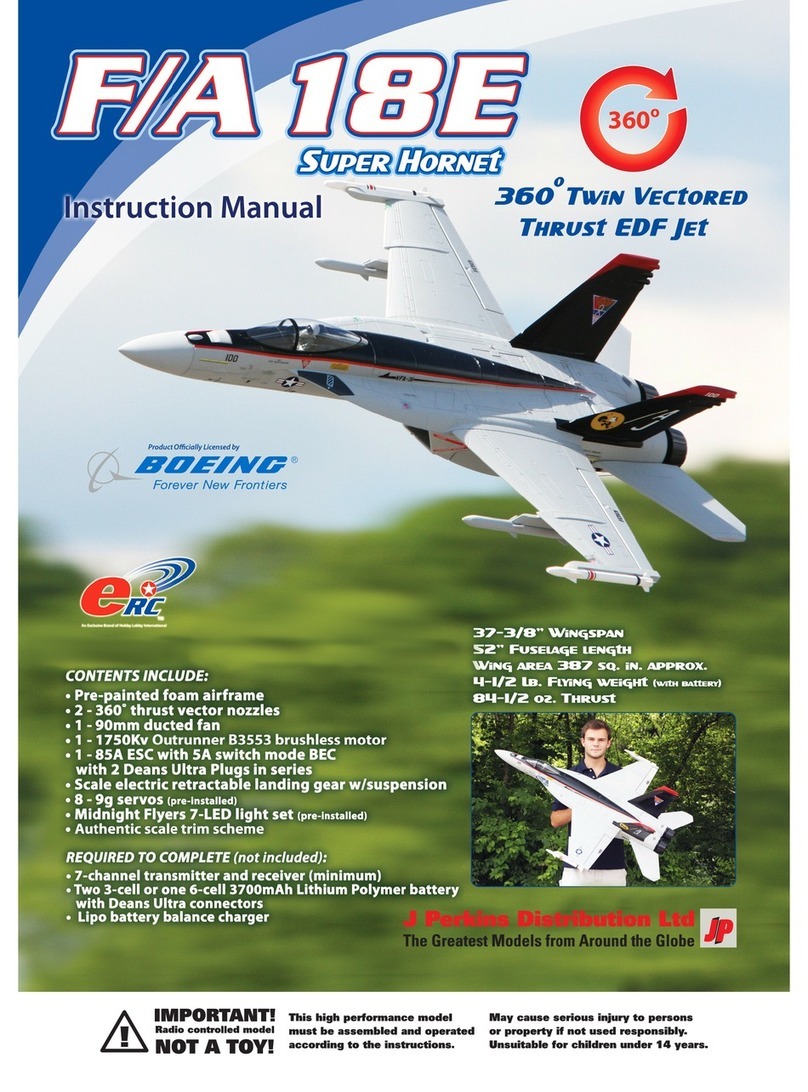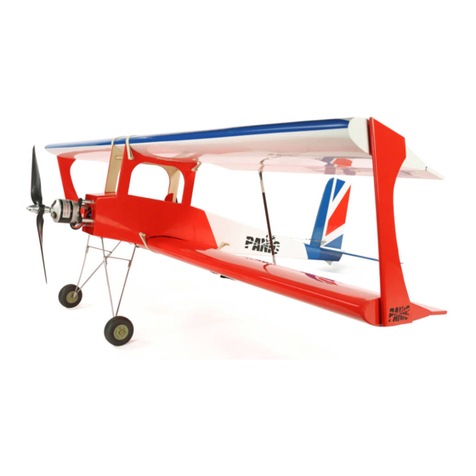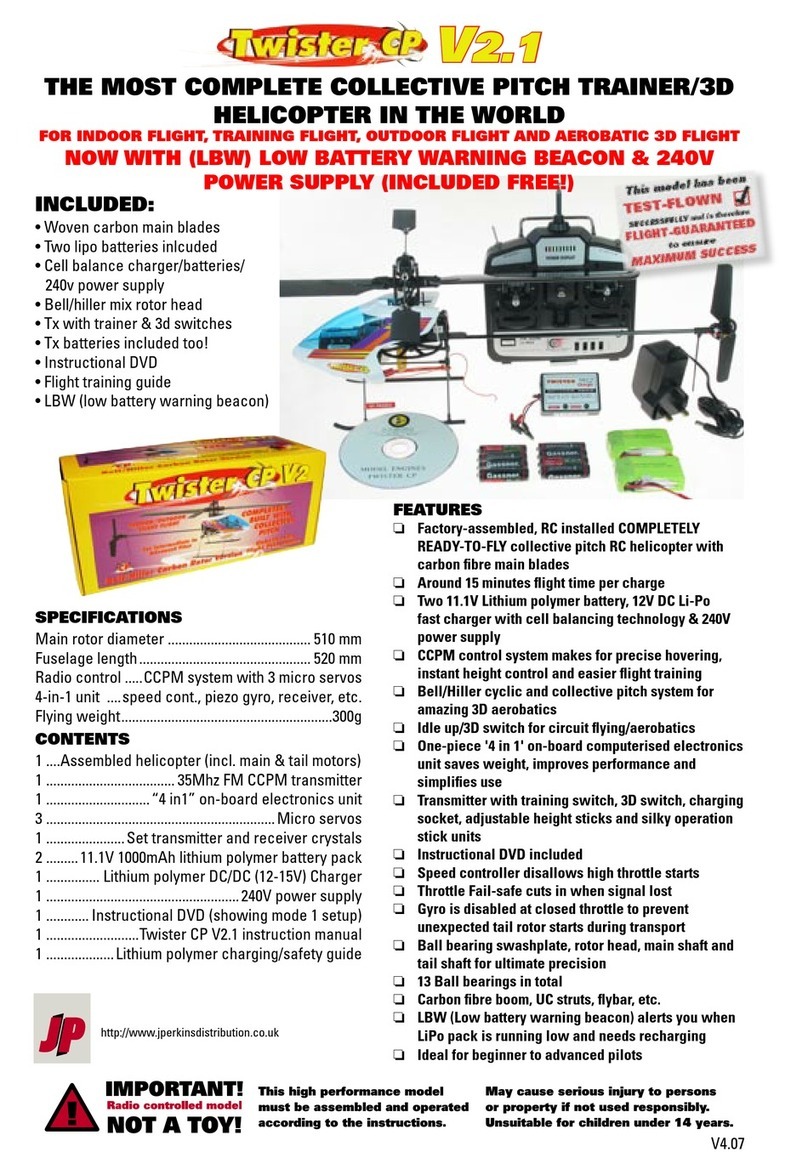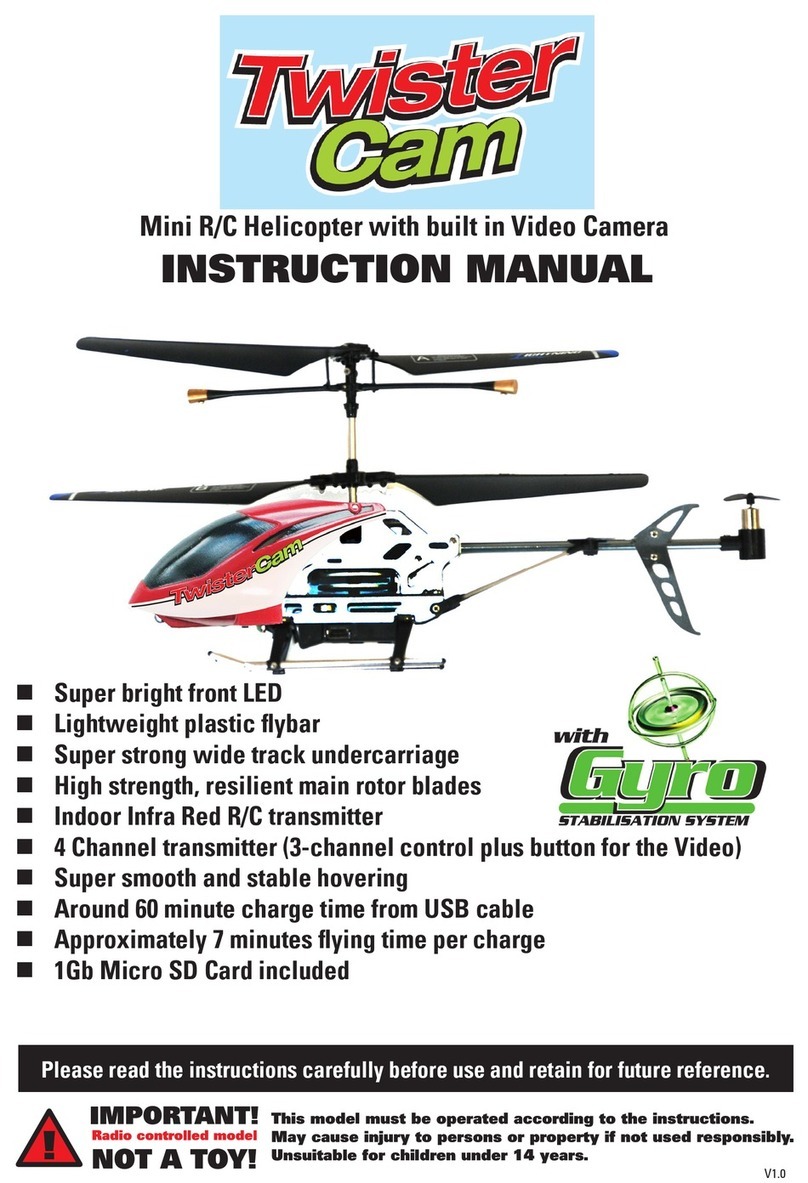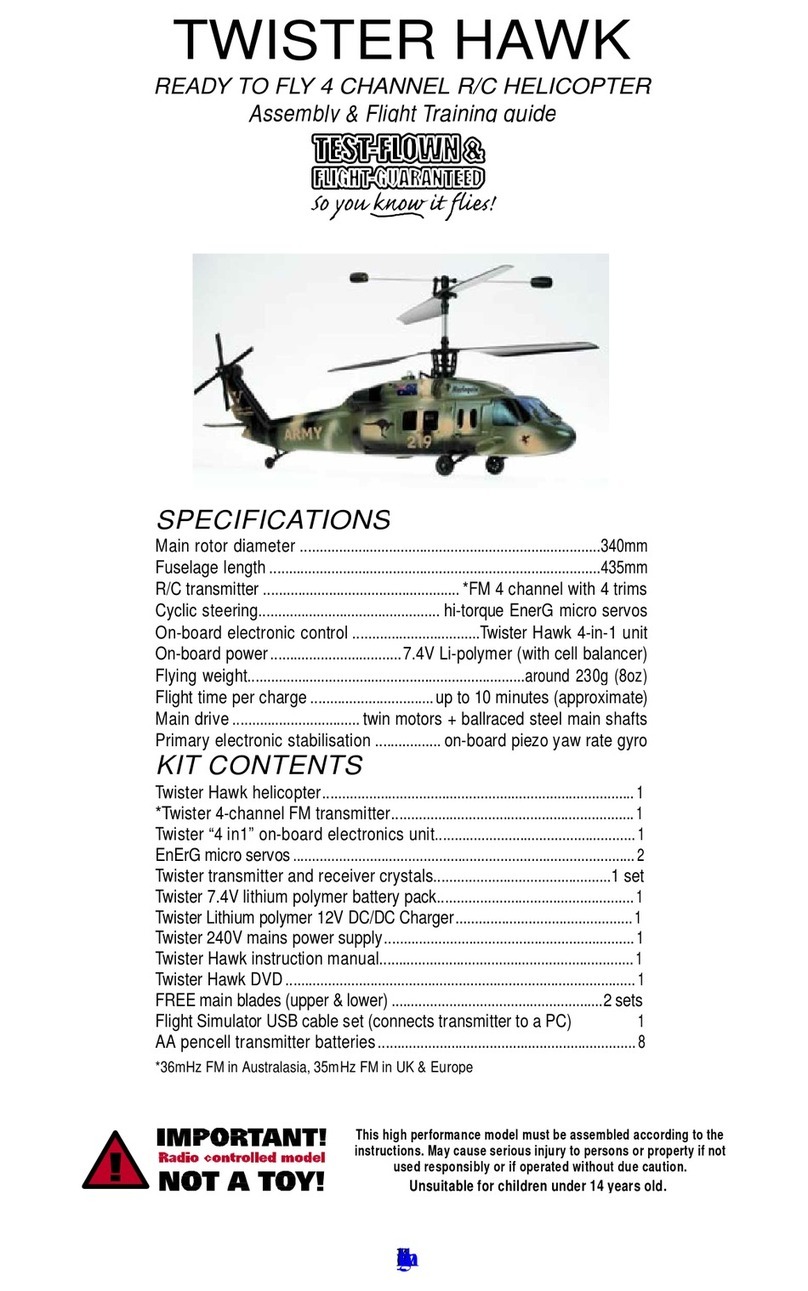7
Safety Instructions for Charging and Using Li-Poly Batteries
• Do not put the battery on, or near anything, that can catch re when charging.
• Always charge the battery on a non-ammable base i.e. a metal tray.
• Do not disassemble the battery.
• Do not short-circuit the battery.
• Do not use, or leave, the battery nearby a re, stove or heated place.
• Do not immerse the battery in water or seawater, do not get it wet.
• Do not charge the battery near a re or under the blazing sunlight.
• Do not drive a nail into the battery, strike it with hammer or apply excessive weight to the battery.
• Do not impact or throw the battery.
Safety Precautions
1. Please do not change any part of the plane without checking with J Perkins (Dist) Ltd. You will be
responsible for any damages caused by these changes.
2. Your ying area should be wide-open and free of obstacles. Never y near highways, railways,
airports, power lines or in residential areas.
3. To avoid personal injury, never y your model near or facing people, or throw the plane in their
direction.
4. Do not y your model outdoors in winds over 3MPH.
5. Never dispose of batteries or parts of your model in a re as it could lead to an explosion and
personal injury.
General Safety Statements
1. This aircraft is not a toy. It has been designed for the experienced modeller and pilot. You are
responsible not to cause damage to other’s personal property or cause personal injury.
3. J Perkins (Dist) Ltd and our dealers are not responsible for any economic or law liability for any
improper usage or operation of this model.
4. This model is designed for use by modelers age 14 and over. This model is not recommended for
unsupervised modellers under 16 years of age.
5. Never use the model or associated electronics in damp or rainy conditions.
6. This model is made from EPS and Polystyrene, which can be damaged by excessive heat. Keep your
model away from excessive heat or out of direct sunlight for extended time periods or it can become
warped and affect the ight performance of the model.
8. Never leave the battery connected while the model is unattended. Accidental operation can occur and
cause personal injury.
9. Before operating the model, make sure to turn on the radio system and check the functions before
beginning ight.
10. Always make sure the throttle at the transmitter has been moved to the low or off position before
connecting the motor battery.
EU regulations
J Perkins Distribution Ltd declares that this remote control system is in compliance with the essential
requirements and other relevant provisions of Directive 1999/5/EC on Radio equipment and
Telecommunications Terminal Equipment. A copy of the declaration(s) of conformity can be obtained
from J Perkins Distribution Ltd, Ashford rd, Lenham, Kent. UK ME17 2DL. This system complies with the
EU directive on Waste Electrical and Electronic Equipment. Do not dispose of this product in household
waste. At the end of the products’ life, dispose of it at a designated collection point for the recycling of
waste electrical and electronic equipment.
Please contact your supplier for any advice required on disposal.
